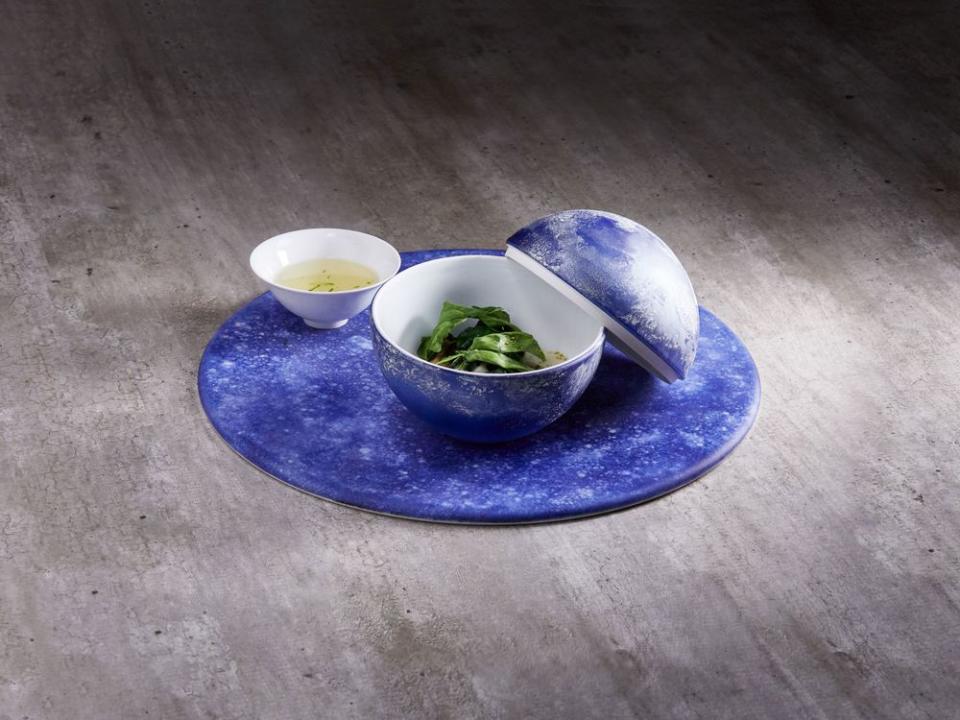The Three Most Important Pasta Ingredients, According to the World's 'Master of Pasta'
The smell of toasting pistachios and freshly chopped herbs. Clattering pans. Shaking hands as the clock wound down to nine seconds, eight seconds, seven seconds—and there were still three plates without garnishes. The 2019 Pasta World Championship, hosted by Barilla in Paris this past October, was full of frenetic energy as 14 chefs from all over the world came to compete for the ultimate title—Master of Pasta.
{%image3}
The competition took place in three rounds over a two-day period, with each timed cooking session eliminating a group of chefs. After the first round, eight were left standing, before a second round whittled the finalists down to four representatives from Japan, Canada, Brazil, and Switzerland, respectively. In the end, Japan’s Keita Yuge won the grand prize for his “Penne Gorgonzola Profumo Giapponese,” made with gorgonzola cheese, oysters, and an aroma of sake, sansho, and yuzu.
The judges gave the dish high marks for its creative presentation and unique flavor combination. It was a triumphant moment for Yuge, a finalist in the 2017 competition and the second Japanese chef to win it all, following Yoshi Yamada's victory at the inaugural Pasta World Championship in 2012.

“I felt my cooking was approved in the world,” Yuge told Food & Wine. “I’ve got confidence for my cooking. And, I appreciate my colleagues who believe and follow me.”
Since Yuge now holds the title of “Master of Pasta,” we asked him for some pasta-making tips. First, he gave us two crucial pieces of advice: always, always, always salt the pasta water and make sure the pasta and sauce mix seamlessly. Then he told us about the three most important ingredients in most pasta dishes—and they're surprisingly simple. It goes to show that you don't need any complicated ingredients or recipes to make an impressive meal.
Anchovies
Yuge loves using anchovies in pasta dishes because they easily give umami flavor to sauce, and we’re inclined to agree.
How to use: We love this recipe from chef Chris Cosentino that’s a riff on carbonara, combining anchovies, garlic, lemon zest, egg yolks, and herbs to create a silky sauce. They’re also perfect for adding depth to a simple 15-minute pasta, too—all you need is garlic, parsley, spaghetti, anchovy fillets, crushed red pepper, lemon juice, kosher salt, black pepper, and Parmesan cheese.
Cheese
It’s no secret that cheese and pasta go beautifully together—hello, baked macaroni and cheese and cacio e pepe. Beyond the taste, Yuge also notes that cheese makes emulsion easier when you’re putting together the pasta sauce, and it helps bond the sauce with the pasta.
How to use: Work your way through all 10 of these cacio e pepe recipes.
Extra-Virgin Olive Oil
This is perhaps the most crucial ingredient of all—Yuge says it’s difficult to make good pasta without extra-virgin olive oil, as it adds a sharpness to the dish. Olive oil, of course, is an essential building block in the world's best pasta dishes, from spaghetti with clams to classic marinara sauce.
How to use: Let your favorite bottle really shine in an olive oil-forward recipe, like this spaghettini with mushrooms and garlic oil.

